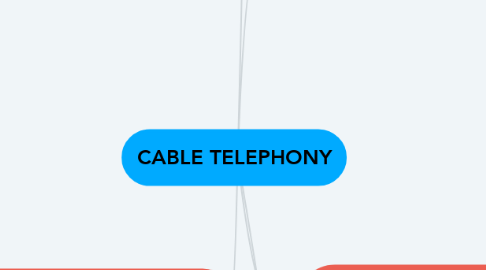
1. Distributed Call Signaling
1.1. Overview
1.1.1. emulation of the behavior of the PSTN
1.1.1.1. functions controlled
1.1.1.2. resources controlled
1.1.2. based on a distribution of intelligent endpoints
1.2. RFC2543
1.2.1. publish in 1999 by the IETF
1.2.2. describing the operational behavior of SIP
1.2.3. using by endpoints on the Internet to each signal
1.2.3.1. establish a session for multimedia communication
1.2.4. precursor to PacketCable 2.0
1.3. DSC
1.3.1. Using many of the same components as NCS
1.3.2. the call agent in a CMS is replaced by a DCS - proxy (DP)
1.3.3. the MTA or SIP endpoint signal to the DP to contact another SIP endpoint.
2. Embedded MTA Start - up
2.1. IP device must wait for associated cable modem to complete boot process.
2.2. three start - up flows the eMTA
2.2.1. Secure flow
2.2.2. Basic flow
2.2.3. Hybrid flow
3. PacketCable 2.0
3.1. based on Release 7 of IMS
3.2. track major changes as the specification matures
4. INTRODUTION
4.1. The 1st Generation
4.1.1. PacketCable 1.0 and 1.5 and SCTE IPCablecom specifications
4.1.1.1. based on the IETF ’ s Media Gateway Control Protocol.
4.2. The 2nd Generation
4.2.1. PacketCable 2.0
4.2.1.1. Base on the Session Initiation Protocol (SIP) and 3GPP’ s IP Multimedia Subsystem (IMS) specifications
4.2.2. Enable convergence of IP services through the use of a common signaling mechanism.
5. Network Control Signaling PacketCable 1.0 and 1.5
5.1. Providing a highly reliable primary line voice service for residential.
5.2. DOCSIS access network.
5.3. PacketCable 1.0
5.3.1. produced by CableLabs
5.3.2. specified the mechanisms for voice service using embedded MTAs
5.4. PacketCable 1.5
5.4.1. making enhancements to the original specifi cation.
5.4.2. adding support for SIP signaling between core network elements
5.4.2.1. CMS - CMS
5.4.2.2. CMS - unnified messaging

